When considering patients that present for thoracic surgery many aspects will be the same as for general surgery. However, unlike general surgical patients, patients for thoracic surgery will need more careful planning for requirements such as ventilation, monitoring and postoperative care of chest drains among others. This article aims to present general surgical considerations alongside those more specialised to thoracic surgery to give a complete overview of planning for the procedure involved.
The acute presentation
The acute presentation patient will always demand the most attention from those in the practice and it will be necessary to consider whether the patient is dyspnoeic and/or has increased inspiratory/expiratory effort, reduced cardiac output and possibly pneumothorax. Responses and treatments that could be pre-empted include: oxygen therapy via tent, mask (Figure 1), nasal prongs or catheters or cage (Figure 2); intravenous access; fluid therapy; blood tests (blood gas analysis); blood pressure measurement; chest drain equipment; and stress reduction for the patient via a calming environment or sedation. Imaging of the thorax and/or abdomen may also be deemed necessary by the attending veterinary surgeon (Haskey, 2015).
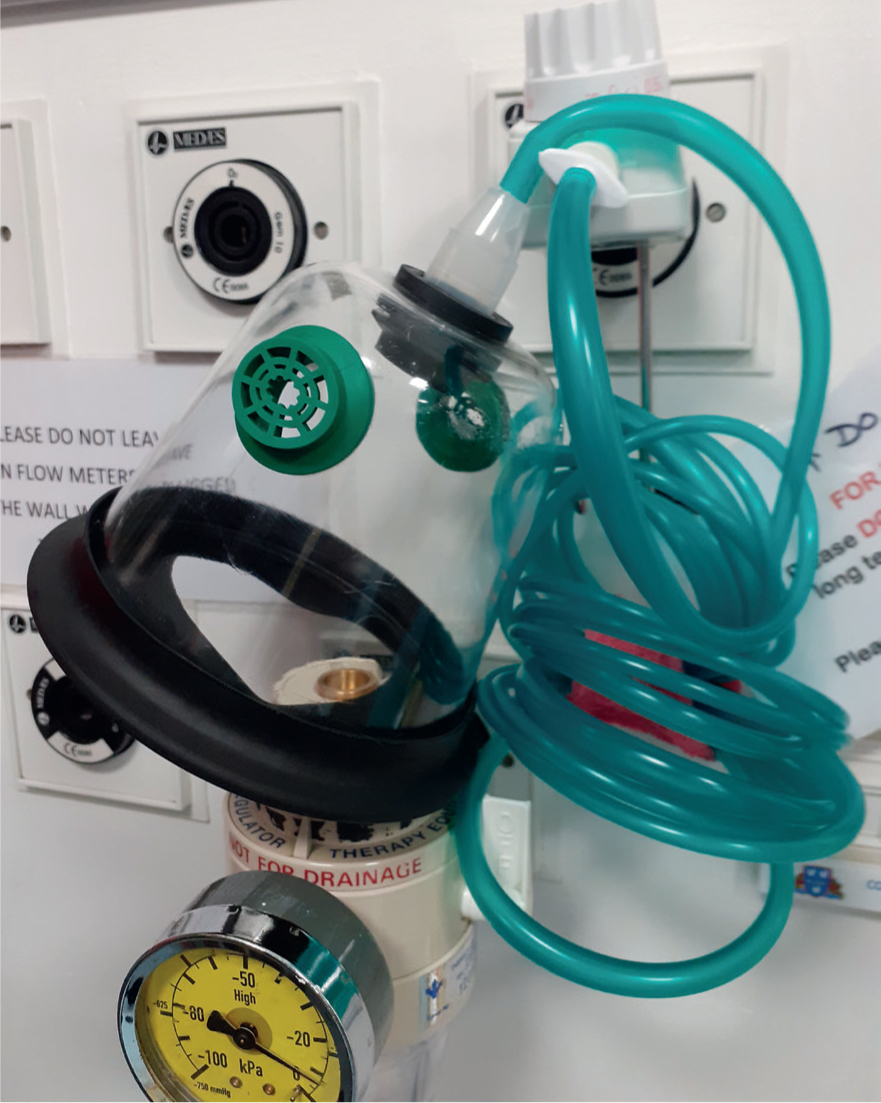
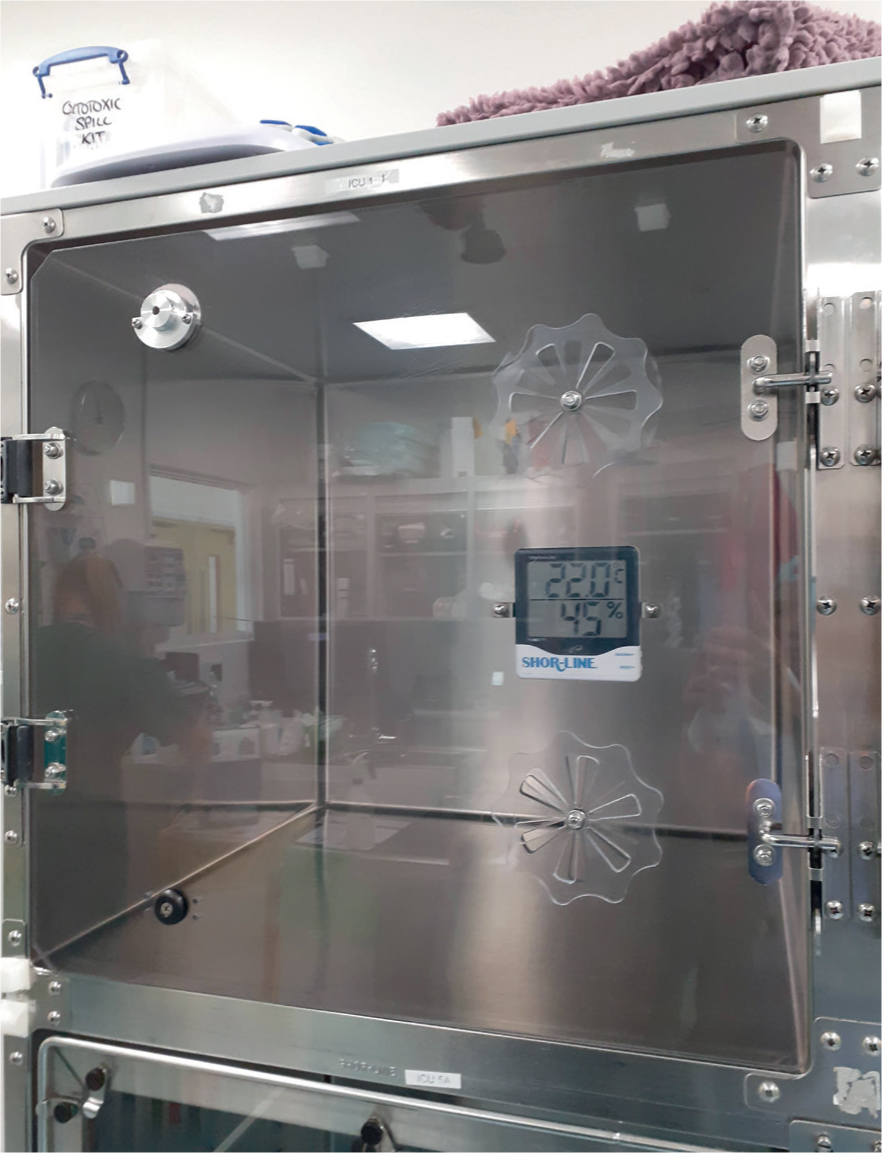
Surgical thoracic procedures may be required for a number acute conditions including: trauma, pneumothorax, stick injury, ruptured bullae and oesophageal foreign body, among others.
The chronic presentation
The chronically presenting patient will need to have a thorough clinical examination for pre-surgical assessment during which decisions can be made for any extra pre-operative diagnostics that may be required, such as blood tests and imaging, and the best time for admission for surgery. This can be a good time to check with the surgeon about instrumentation requirements and that the appropriate sizes of consumables are in stock.
Surgical thoracic procedures that may present chronically could include pericardectomy, patent ductus arteriosus, tumour removals, persistent right aortic arch and chylo/pyothorax among others.
Pre-operative period
Anaesthesia planning
Before starting to plan a protocol previous records for the patient should be accessed and thoroughly assessed for pertinent information including medications the patient is already taking, previous anaesthetic protocols and previous surgeries undertaken. Anaesthesia for patients undergoing thoracic surgery will always be challenging and each area of the pre-, peri- and postoperative period will need to be planned, potential problems identified, and appropriate treatments prepared for to ensure that any emergency situation that arises can be dealt with effectively. Plan for any thoracic surgery to be the first surgical case of the day for the specific theatre involved, as surgical time may be extended. Preparation time may also be extensive if the patient is a large breed and the chest may need draining before induction to ensure the optimal condition for respiration is achieved. This is also usually the most appropriate time to consider the results of any blood tests that have been performed, and whether any extra tests are needed before anaesthesia begins, such as packed cell volume (PCV), electrolyte levels, blood gases and cross matching for possible blood transfusion.
Record keeping
Good record keeping is paramount to collaborating with other staff members when changes to the anaesthesia protocol are deemed appropriate and for the identification of trends within monitoring. Detailed comments should be made about the protocols used, including drugs given (milligrams/micrograms/millilitres/route) and timings of significant events (Figure 3) (Brouwer, 2000). This method of record keeping should be continued from the preoperative period through to the postoperative period.
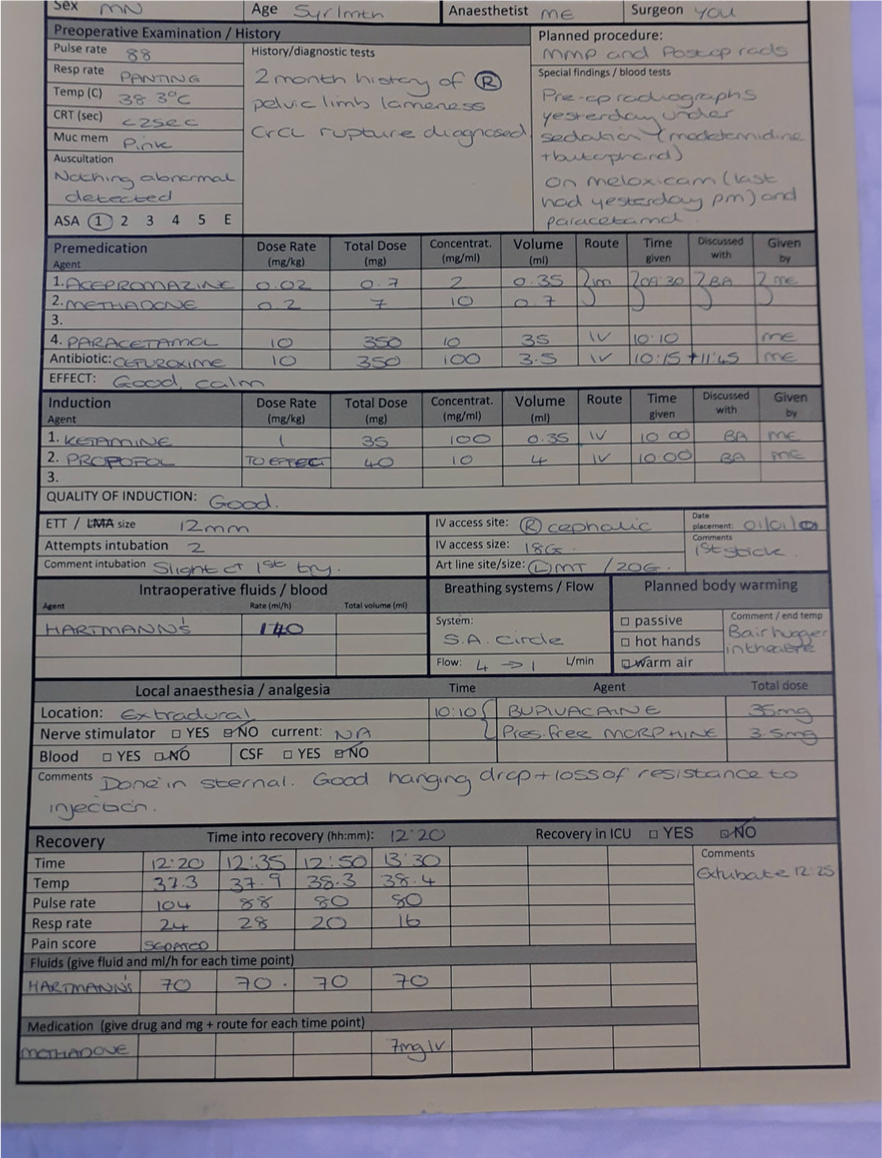
Comfort
Comfort of the patient during surgery must also be a consideration and so some thought should be given to the positioning and restraint of the patient (Figure 4), whether the operating table needs to be tilted to take pressure off the diaphragm, and what support methods are available, such as bean beds and foam wedges. Consider what warming methods you will be using pre and perioperatively to combat hypothermia as this has a very detrimental effect on anaesthesia and surgical recovery (discussed later). As with any general surgery, time should be taken to check and express the bladder of the patient if required; discomfort of a large bladder and the potential introduction of urine contaminant to the theatre is undesirable. This is necessary specifically for thoracic patients as extra pressure within the abdomen can create pressure on the diaphragm, and so increase respiratory effort and reduce venous return to the heart (Ridings, 1995).
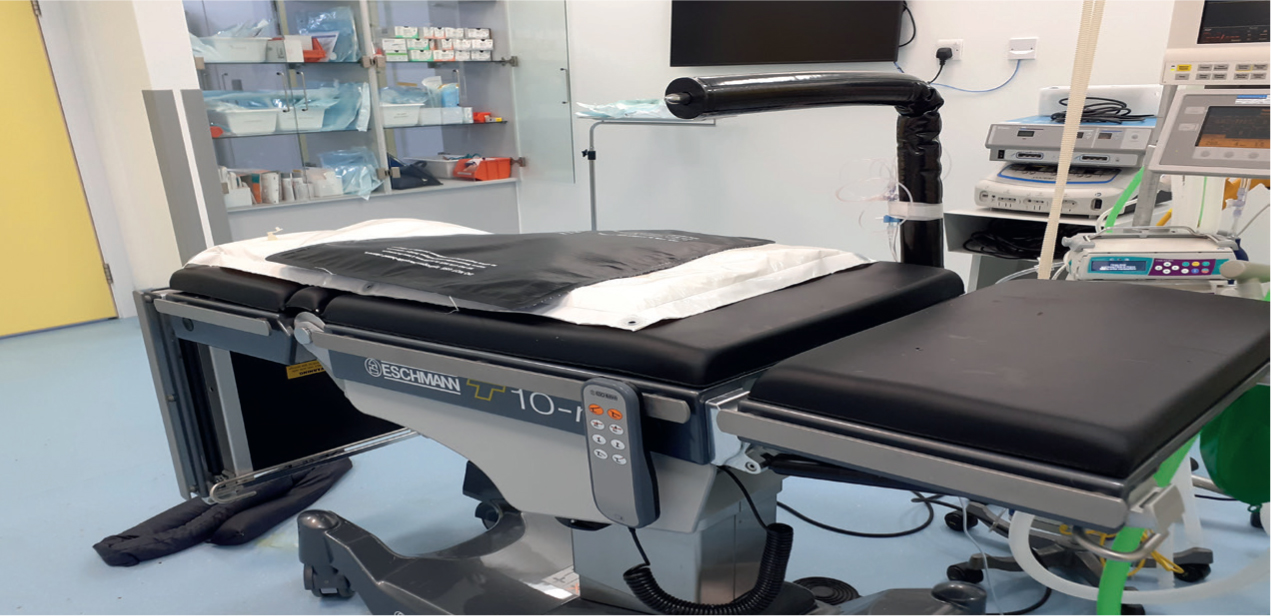
Temperature regulation
Very small patients can be warmed prior to anaesthesia by placing in an incubator, on a heat pad or with ‘hot hands’. Care should be taken not to overheat, and thought should be given to the ambient temperature of the preparation room and theatre. There are various products available on the market to provide heat during surgery including heat pads and warm air circulation methods. In place of these commercial products simple methods can be employed with ‘hot hands’, bubble wrap, dressing materials over extremities, although care must be taken not to burn skin and replacement/rewarming may be required during longer surgeries. There are also various heat and moisture exchangers available that connect to the breathing system to warm inhaled gases. Warm fluids should be used by the surgeon during surgery to wet swabs and for intra-cavity flush (Armstrong et al, 2005; Barnes et al, 2017).
Pain relief
When considering the best course of pain relief for any surgical procedure patients it can be helpful to remember the NOLANP anacronym to ensure every method available is used to target as many points on the pain pathway as possible. NOLANP stands for:
- N = non-steroidal anti-inflammatory drugs (NSAIDs)
- O = opioids
- L = local anaesthetics
- A = alpha-2 adrenoceptor agonist (alpha2)
- N = N-methyl D-aspartate (NMDA) receptor antagonists
- P = paracetamol.
It is possible to include all these drug classifications at varying points during an anaesthetic protocol, depending on the condition and pre-existing illnesses of the patient. An alpha2 and opioid can be given as a premedicant, a NMDA receptor antagonist (ketamine) can be given as a co-induction agent and then as an ongoing continuous rate infusion if necessary; local anaesthetics (lidocaine, bupivacaine) can be given when performing nerve blockade. Paracetamol can be given to dogs intravenously every 8 hours and can be started at any stage of the anaesthetic protocol (Alderson et al, 2018).
Perioperative patient
Monitoring
Monitoring any patient under anaesthesia should ideally encompass capnography, pulse oximetry (SPO2), blood pressure measurement (BP), electrocardiogram (ECG) and temperature (T) every 5 minutes to ensure any negative effects of surgery or anaesthesia are recognised and dealt with promptly. Obviously, it will depend on what the practice has available. Specifically for those patients undergoing thoracic surgery, blood gas (BG) measurements can also be very helpful in monitoring the respiratory status of thoracic patients, especially during any manual or mechanical ventilation, but the specific analyser must be available. If blood gas measurements are not available, then effective monitoring of the respiratory status of the patient can be achieved with SPO2 and capnography. Certainly, for the thoracic surgery patient as much of the monitoring mentioned above should be included as possible. Actual physical monitoring of the patient should not be overlooked (eye position, pulse palpation etc) in the face of monitoring machinery, and help should always be asked for if any uncertainty arises over the state of the patient. Good communication should be maintained throughout the monitoring process and the surgeon informed of any consistent or major discrepancies in normal values for the monitoring chosen so that decisions can be made on any drug therapy required without delay (Brouwer, 2000).
Capnography
Capnography is the graphical representation of continuous capnometry during the respiratory cycle. It provides real time information on respiratory rate, end tidal carbon dioxide (ETCO2) levels, and often inspired carbon dioxide levels as well. There are mainstream capnography connectors which attach between the endotracheal tube (ET) and the breathing system. These can be bulky and add to drag and dead space and so there are also side stream connectors available which attach a sampling line to a small port either on the ET tube connector (Figure 5), breathing system or heat and moisture exchanger (HME) (Figure 6). As the patient exhales, carbon dioxide is increasingly forced from the alveoli to display as the expiratory upstroke and then plateaus until it reaches maximum levels, the following inspiration is shown as a steep downstroke. Change to the respiratory waveform on the capnogram provides information to the anaesthetist, including displaying leaks in the breathing system or sampling line, inspiratory and expiratory obstruction, inspired carbon dioxide levels and respiratory effort during mechanical ventilation amongst others, and some of these may be seen during thoracic surgery (Figure 7). More commonly seen patterns in patients undergoing thoracic surgery may be hypoventilation, a steep expiratory upstroke, dips in alveolar plateau, a sloping inspiratory waveform and even reduced cardiac output. Normal values for ETCO2 are 35–45 mmHg. Commonly seen causes for hyper and hypocapnia are shown in Table 1 (Duke-Novakovski et al, 2016).
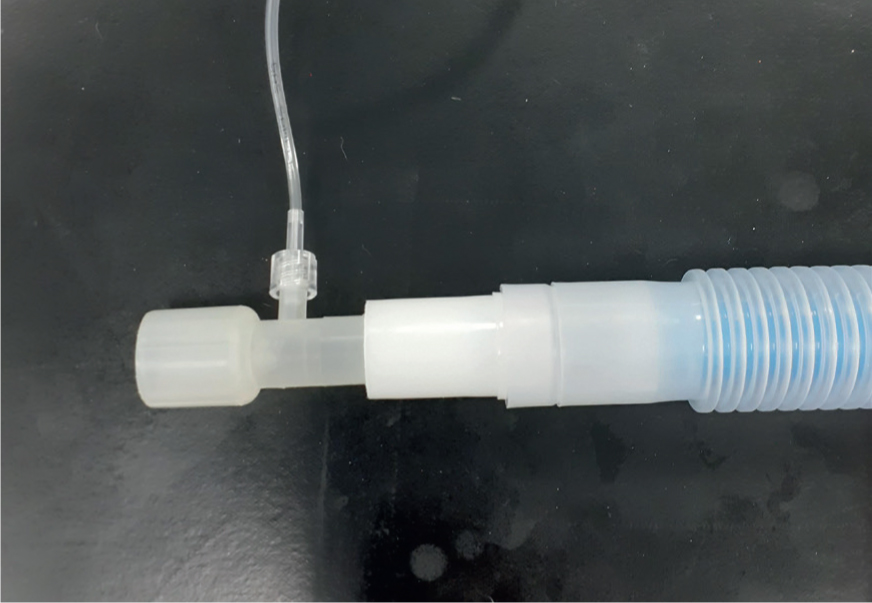
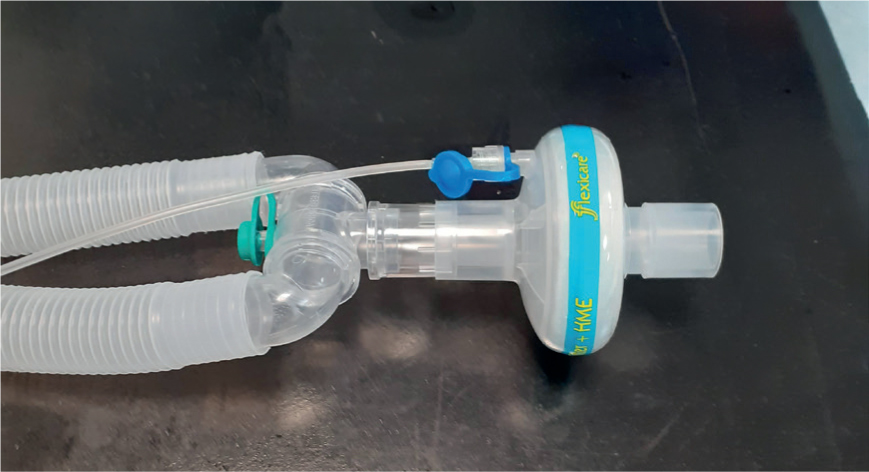
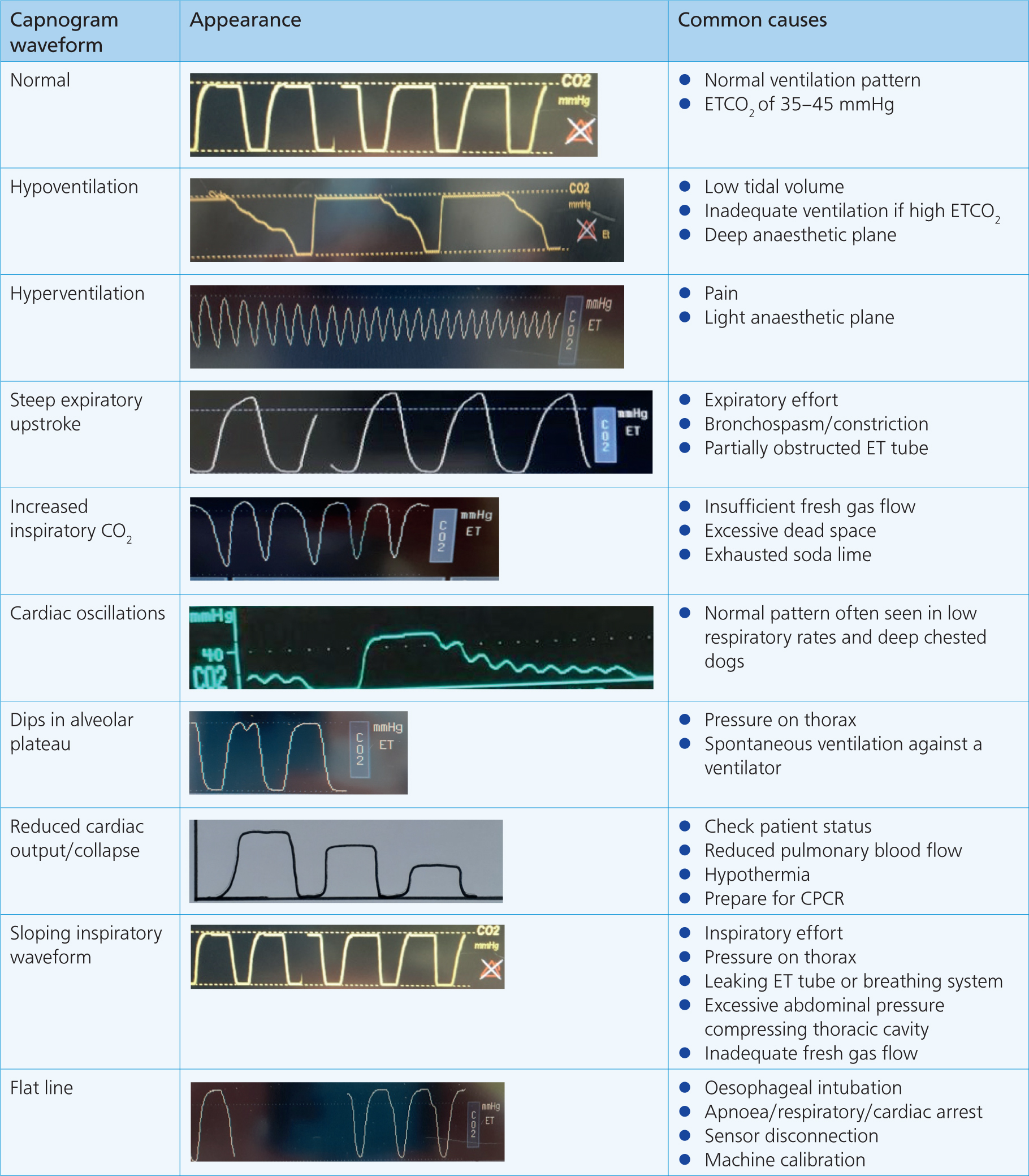
Table 1. Causes and remedies for hypo and hypercapnia
| Increased ETCO2 | Decreased ETCO2 | ||
|---|---|---|---|
| Cause | Remedy | Cause | Remedy |
| Rebreathing | Check soda lime and fresh gas flow rates | Hyperventilation | Check depth of anaesthesia and pain |
| Hypoventilation | Check depth of anaesthesia and ability to ventilate, consider depressive drugs given | Hypotension | Check blood loss, fluid therapy requirements and depth of anaesthesia |
| Increased CO2 production by patient | Check for hyperthermia and shivering | Reduced metabolism | Check for hypothermia |
| Shallow breathing | Check depth of anaesthesia, consider ventilation | ||
| Leak | Check endotracheal tube cuff inflation and integrity of breathing system | ||
Pulse oximetry
Pulse oximetry is the real time display of oxygen saturation of the haemoglobin in arterial blood (SpO2). A pulse oximeter reading of 95–100% should be considered a safe indication of adequate PaO2 (Carnell, 2008). For thoracic surgery patients an oximeter probe can be attached to the tongue tongue to give the greatest ease of adjustment if required. Normal values for SpO2 are ≥95%. Problems can easily arise with SpO2 monitors as they are fairly sensitive and will display erroneous results with movement artefacts, low perfusion, dark pigmentation of the connected area, hypothermia, drying of the tongue and compression of the connected area over time. It is often good practice to replace the probe when the waveform dampens, and placing a piece of moistened swab or paper towel over the connected area can help (Grint, 2007).
Blood pressure measurement
Invasive blood pressure measurement is performed via an arterial catheter and pressure transducer to display a real time constant arterial blood pressure. This is very useful for the thoracic surgery patient as potential critical events for these procedures include blood loss (Detterbeck et al, 1995). The transducer should be placed at the level of the right atrium of the patient (the point of shoulder in dorsal recumbency and the sternum in lateral recumbency) to display accurate measurements. Arterial catheters can be hard to place successfully and may fail at any point, so it is sensible to have an alternate method of blood pressure measurement available. Dampening of the waveform will typically mean the catheter is obstructed and flushing or repositioning by a surgical team member will rectify the problem. Normal ranges in cats and dogs during anaesthesia are 90–120 mmHg for systolic arterial pressure (SAP), 55–90 mmHg for diastolic arterial pressure (DAP) and 60–100 mmHg for mean arterial pressure (MAP) (Duke-Novakovski et al, 2016).
In the event that invasive blood pressure measurement is unavailable then non-invasive blood pressure measurement can be performed via an oscillometric monitor. These are primarily based on placing a cuff around a limb or tail and rely on measuring pressure oscillations as the cuff deflates to determine SAP, DAP and MAP. It is important to place a correctly fitting cuff to each patient. The width of the cuff should cover approximately 40% of the circumference of the chosen extremity. A too large cuff will underestimate blood pressure and a too narrow cuff will overestimate it. Another alternative method for non-invasive BP measurement, depending on what equipment you have available, is the Doppler technique using an ultrasound probe placed over an artery distal to a cuff connected to a sphygmomanometer. The cuff is inflated until the pulse sound cannot be heard and then deflated until the pulse sound resumes. The resulting measurement on the sphygmomanometer corresponds to SAP in dogs and MAP in cats. Problems can arise using both techniques when there is hypotension, low perfusion and hypothermia present. The Doppler technique can be challenging to keep in place and headphones may be preferred during surgery. Occasional erroneous results can occur and in such situations it is appropriate to remeasure immediately to determine the accuracy of the results; it can be helpful to consider the trend of oscillometric measurements rather than each individual result (King and Boag, 2007).
Whichever method of blood pressure measurement you have available the information provided from accurate BP measurement is invaluable as Table 2 shows.
Table 2. Causes and remedies for hypo and hypertension
| Hypertension | Hypotension | ||
|---|---|---|---|
| Cause | Remedy | Cause | Remedy |
| Pain | Analgesia | Hypovolaemia | Fluid bolusAssess blood loss |
| Light anaesthetic plane | Assess and rectify | Vasodilation | Assess plane of anaesthesiaFluid bolusConsider drugs given |
| Early stage hypoxaemia | Assess arterial oxygen levels via blood gasAssess breathing systemAssess respiration/ventilation | Cardiac arrhythmias | Identify and inform surgeon |
| Early stage hypercapnia | Assess respiration/ventilation rateAssess capnography waveformAssess plane of anaesthesia | Obstruction to venous return | Assess any mechanical ventilation/capnography waveform and adjust volumes and pressuresAscertain point in surgeryRule out pneumothorax |
Electrocardiogram
An electrocardiogram (ECG) is very useful to identify any cardiac arrhythmias which can arise through surgical stimulus during thoracic surgery and as a result of drugs given. It does not give information on cardiac output; it is a representation of the electrical activity of the heart only and so you must not rely on the ECG alone for indication of cardiac output. Ideally a sinus complex will be seen throughout thoracic surgery, but any arrhythmias should be communicated to the surgeon. Arrhythmias may more commonly be seen during thoracic surgery where the focus is around the heart such as pericardectomy, patent ductus arteriosus closure and tumour removals (Angelini et al, 1974).
Temperature
Temperature of the patient can easily be monitored via an oesophageal probe or via a typical rectal thermometer. Thoracic surgery patients may be prone to hypothermia as heat loss occurs when a large body cavity, such as the thorax, is opened (Sajid et al, 2009). Anaesthesia itself is a major risk to body temperature as inhalation of cold anaesthetic gases, muscle inactivity, vasodilation, reduced metabolic rate and a large clip and prep area will all lower temperature for any patient not just those for thoracic surgery.
Dangers of hypothermia include reduced cardiac output, prolonged coagulation time, prolonged drug metabolism, prolonged return to spontaneous breathing after mechanical ventilation, prolonged recovery times, and delayed wound healing (Armstrong et al, 2005). Shivering on recovery increases oxygen demand of the myocardium and can mean oxygen supplementation is required. Ideally body temperatures in the dog and cat should be maintained within the normal temperature range of 37.8–39.2°C (100.0–102.5°F) (Killner, 2009; Dugdale, 2011; Clutton, 2017).
Blood gas measurements
Blood gas measurements are the ‘gold standard’ for determining the patient's oxygenation status, adequacy of ventilation and acid-base status, but rely on the ability to draw arterial blood samples to assess oxygen uptake in the lungs, and then the appropriate analysers to give a measurement. An arterial catheter can be placed to facilitate this, and the dorsal pedal artery is often the site of choice. Heparinised syringes should be used, and all air bubbles expelled before analysis.
For the acute or chronic respiratory patient in particular obtaining a pre-operative blood gas sample is desirable to give a baseline on all parameters measured. This will help ascertain any pertinent changes during the perioperative period when monitoring adequacy of ventilation.
PaO2, PaCO2, pH and lactate measurements all give information on how well the patient is ventilating. Clinically significant hypoxaemia is defined as a PaO2 of less than 80 mmHg (Angell and Seymour, 2015). Normal values for blood gas measurements for dogs and cats are shown in Table 3.
Table 3. Normal values for blood gas measurements
| Parameter | Arterial sample |
|---|---|
| PaO2 | 80–120 mmHg |
| PaCO2 | 35–45 mmHg |
| pH | 7.35–7.45 |
| Lactate | <2.0 mmol/l |
| HCO3 | 22–36 mmol/l |
Interpreting blood gas measurements can be challenging but a five-step method can be employed to help ascertain significant results.
- Step One: evaluate the patient's PaO2 and SPO2. If they are below normal there is evidence of hypoxaemia.
- Step Two: look at the pH. If it is less than normal there is evidence of an acidaemia. If it is higher than normal there is evidence of an alkalaemia.
- Step Three: evaluate the patient's PaCO2 and ETCO2. If they are below normal then there is evidence the patient has a respiratory alkalosis and if higher than normal then a respiratory acidosis.
- Step Four: look at the HCO3. If it is below the normal range then there is evidence the patient has a metabolic acidosis and higher than normal values gives evidence of a metabolic alkalosis.
- Step Five: look at the lactate. High blood lactate levels are evidence of hypoperfusion and a greater degree of anaerobic metabolism due to inadequate oxygen delivery.
In the absence of the capability of blood gas measurements, ETCO2 values can be said to approximate PaCO2 levels, and SPO2 is adequate to approximate blood oxygenation levels well (Angell, and Seymour, 2015; Duke-Novakovski et al, 2016).
Fluid therapy
Fluid therapy should be started under maintenance protocol for an anesthetised patient which has been quantified as 5 ml/kg/hour in the dog and 2–3 ml/kg/hour in the cat (Duke-Novakovski et al, 2016).
In the event of hypotension, the plane of anaesthesia should be assessed and the volatile agent reduced if possible to minimise associated vasodilation. A fluid bolus should then be given at a rate of 5–10 ml/kg of the crystalloid fluid chosen over 15 minutes. This can be repeated if there is little or no response in blood pressure status. If the response is deemed inadequate, then a colloid fluid bolus can be used at a rate of 2–5 ml/kg over 15 minutes. If there is no response to fluid therapy, then consider use of sympathomimetic drugs or blood transfusion.
In the event of haemorrhage, assessment of blood losses is useful in determining the best replacement strategy. Total blood volume in the dog is quantified as 90 ml/kg and in the cat as 56 ml/kg (Grint, 2008). If there is a 10–15% blood volume loss then crystalloid fluid replacement should be adequate; a 15–20% blood volume loss indicates a need for colloid replacement and at a 20% or more blood volume loss the oxygen carrying capacity of the patient is compromised and so a blood transfusion is required (Grint, 2008). If a crystalloid fluid replacement is used to replace blood loss then a volume 3–4 times the blood volume lost is required. If colloid or blood is being used to replace blood loss then give the equivalent fluid volume to blood lost. Blood loss can be a complication of almost any surgery but it depends on the skill of the surgeon, anatomy of the patient and any pre-existing factors like von-willebrands or even breed disposition.
Assessing blood volume lost is not simply a calculation of blood volume of the patient — consideration must also be given to blood loss during surgery detected through swab soakage and suction pot collection. Weighing soaked swabs can give a blood loss value of 1 g=1 ml, and subtracting the amount of surgical saline used from the volume of the suction pot will help give a more accurate total blood loss value. The PCV of fluid in the suction pot can also be used to quantify the volume of blood in the jar via the formula in Figure 8.

Appropriate ventilation
Appropriate ventilation during thoracic surgery must be planned and prepared for because if the integrity of the thoracic cavity is compromised as a result of the procedure planned, it will be necessary to provide adequate respiratory efforts for the patient. Mechanical ventilation is the ‘gold standard’ but if it is not available then an appropriate breathing system and monitoring for intermittent positive pressure ventilation (IPPV) by hand must be planned and discussed with the team involved. A pulse oximeter and capnograph would be required to assess respiratory function at the very least for prolonged IPPV (Day, 2013).
There are various mechanical ventilators available for all sizes of patients (Figures 9 and 10) and it is important that veterinary nurses are comfortable with how they work. Any ventilator should be set up to mimic the usual ventilation pattern for the patient in question. General goals are to obtain an arterial oxygenation level (PaO2) of 80 to 120 mmHg and an arterial carbon dioxide level (PaCO2) of 35–45 mmHg with an inspiratory time to expiratory time ration (I:E) of 1:2 (Clare and Hopper, 2005).
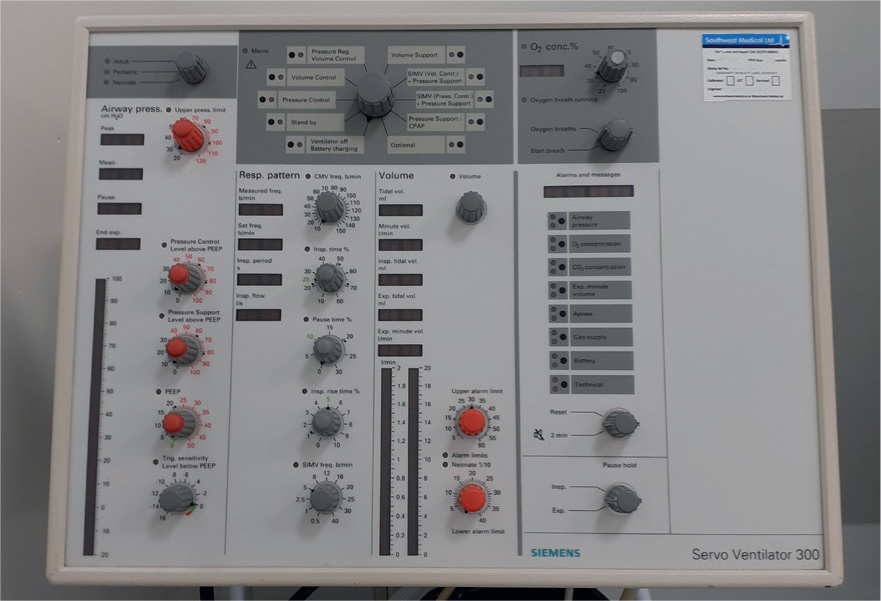
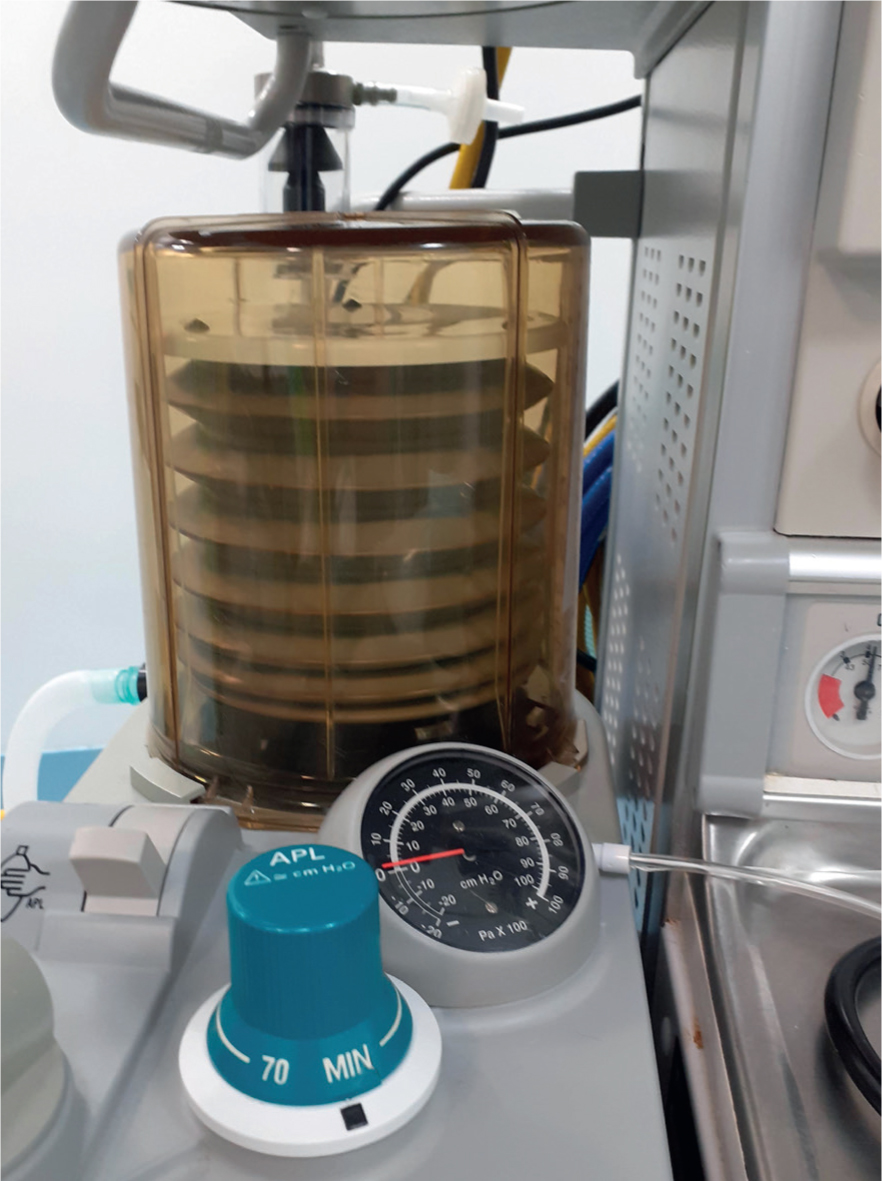
For a time or volume cycled ventilator, calculating the tidal volume (8–15 ml/kg), observing chest wall excursion and that peak airway pressures do not exceed 20 cmH2O is sufficient for a healthy animal. The respiration rate can then be set to achieve normocapnia (Clare and Hopper, 2005).
For a pressure cycled ventilator, the pressure is set by observing the chest wall excursion and the respiration rate to achieve normocapnia. Peak airway pressures should not exceed 20 cmH2O with this type of ventilator as well.
Monitoring during mechanical ventilation centres on capnography, pulse oximetry and, if possible, blood gas measurements to ensure adequate ventilation is being achieved. ETCO2 can be said to approximate PaCO2 and pulse oximetry will estimate the patient's oxygenation level if blood gas measurement is not available (Donovan, 2017).
Weaning from the ventilator at the end of surgery can be started by reducing the respiratory rate to gently increase PaCO2 and so stimulate a return to spontaneous breathing or by removing the patient from the ventilator totally and ventilating by hand if necessary until there is a return to spontaneous breathing and normocapnia (Day, 2013).
Local anaesthetic blocks
Local anaesthetic blocks for surgery are an effective way of providing pain relief by blocking the pain pathway at source. There are several blocks that could be performed depending on the surgical approach being taken including, paravertebral, parasternal, thoracic epidural and intercostal blocks (Freise and Van Aken, 2011).
The procedure should be sterile and a local nerve stimulator (Figure 11) or ultrasound machine can be employed to gain accuracy of needle placement. Most blocks can be performed with a spinal needle without the need for extra machinery. Care must be taken to calculate doses correctly as local anaesthetics can reach toxic levels after overdosage or accidental intravascular injection (Groban, 2003; Yegin et al, 2003).
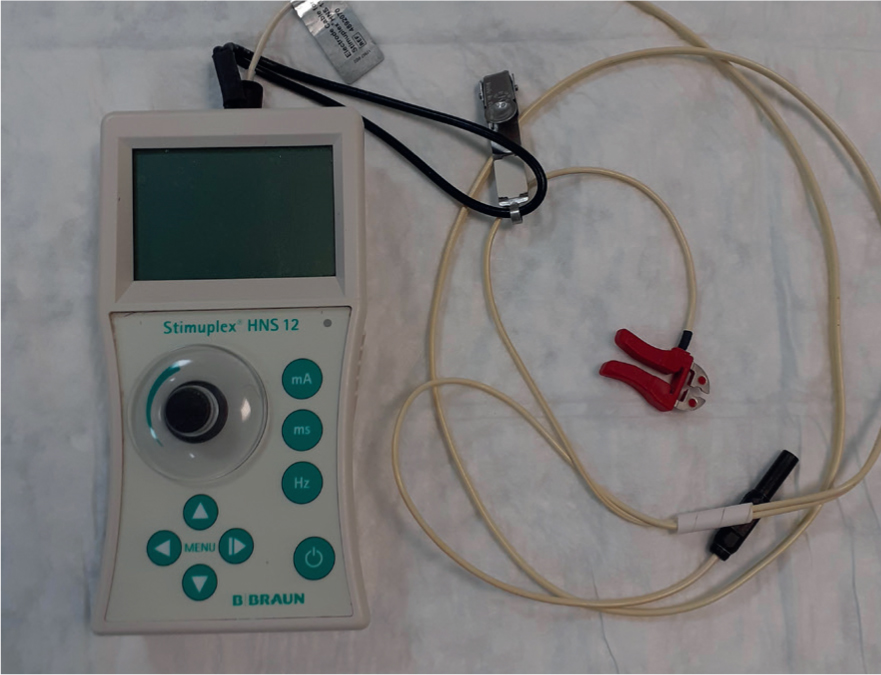
Additional thoughts for the perioperative period
As with any general surgery it is essential that there is good communication between the surgeon, anaesthetist and the theatre team so that any difficulties can be overcome swiftly, and this is no different for a thoracic surgery. It is useful to check regularly that all members of the surgical team are happy with the progress of the surgery, and to confirm whether anything needs to be fetched or prepared. Your surgeon should keep you appraised of any significant blood loss he/she notices through the surgery, but you can also keep an eye on suction collection pot for estimated blood loss and potentially weigh swabs to calculate actual blood loss at an appropriate time.
Continuous attention to monitoring and recording is paramount and if staffing levels permit it can be desirable to have more than one person dedicated to the task. A circulating theatre nurse can also be employed at critical surgical moments, as deemed by the surgeon, in case of any emergency.
Postoperative period
Postoperative care for thoracic surgery patients centres on comfort and good chest drain care. It will be likely that the patient's stay in hospital will be several days at best and so the kennel environment must be comfortable (Figure 12) and easy to navigate for everyone. It can help prevent kennel depression if owners bring in blankets and items from home, to help the patient acclimatise; and food brought from home can also be helpful if patients are anorexic.
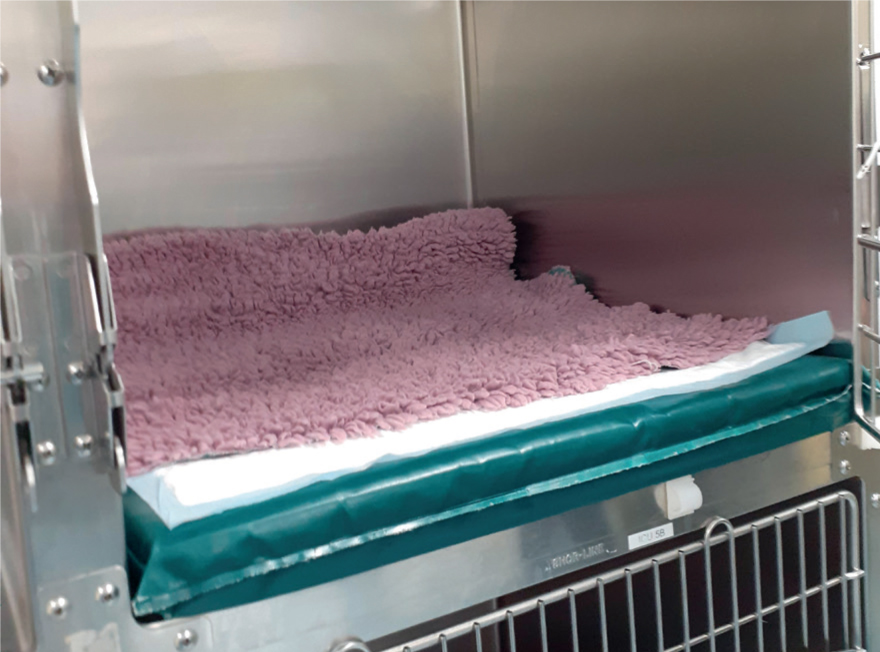
Good chest drain care is paramount when dealing with recovery of a thoracic surgery patient. Every effort must be taken to keep the site of the drain clean and gloves should always be worn when handling the drain. Persons involved with drainage should understand the use of the 3-way tap or centesis valve and ensure that good drainage is being achieved; often the position of the patient can be a factor in whether drainage can be maximised, and changing the recumbency of the patient can help to more fully drain the pleural space. Frequency of drainage is dependent on volumes removed but usually 1–4 hourly is adequate (Day, 2014). Drainage should be stopped when negative pressure up to a 5 ml mark on the syringe used is obtained, to ensure there is no pressure damage to the pleura (Day, 2014) (Figure 13).
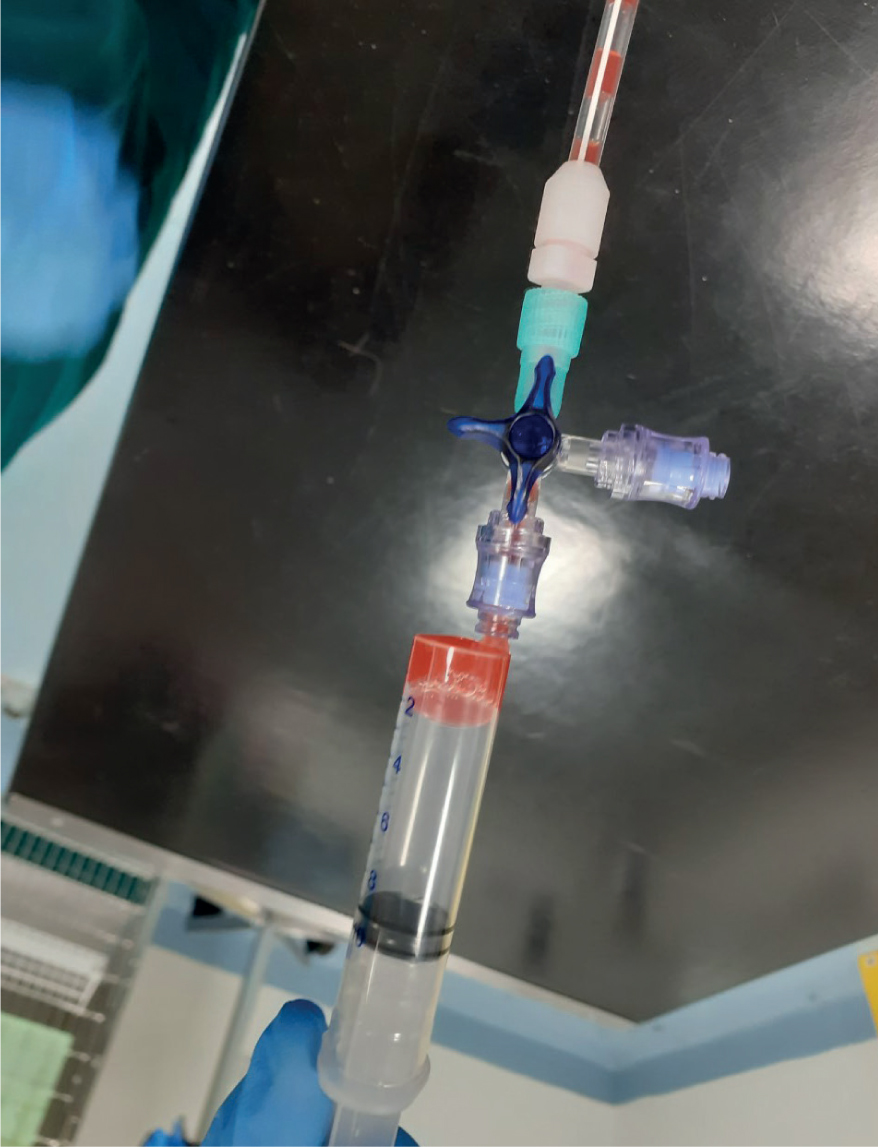
At each drainage the amount of fluid and air should be recorded and if values are increasing then the veterinary surgeon should be consulted as a matter of urgency. It can be very helpful to have a written protocol (Figure 14) so that each person is using the same technique for drainage. Patients should wear an Elizabethan collar to ensure they do not interfere with the drain when at rest, and comfort should be addressed with adequate padding around the tap and an appropriate sized, soft vest material used to hold it in place (Figure 15). Dressings around the drain entry site should be examined at every drainage and replaced if necessary. Biopatch™ dressings (Figure 16) can be used to provide antibacterial support. Pressure bungs at the ends of the 3-way tap should be cleaned before drainage and changed as necessary, but at least once daily. Care should also be taken to record any emphysema around the thorax and axilla regions (Halfacree, 2011; Day, 2014).
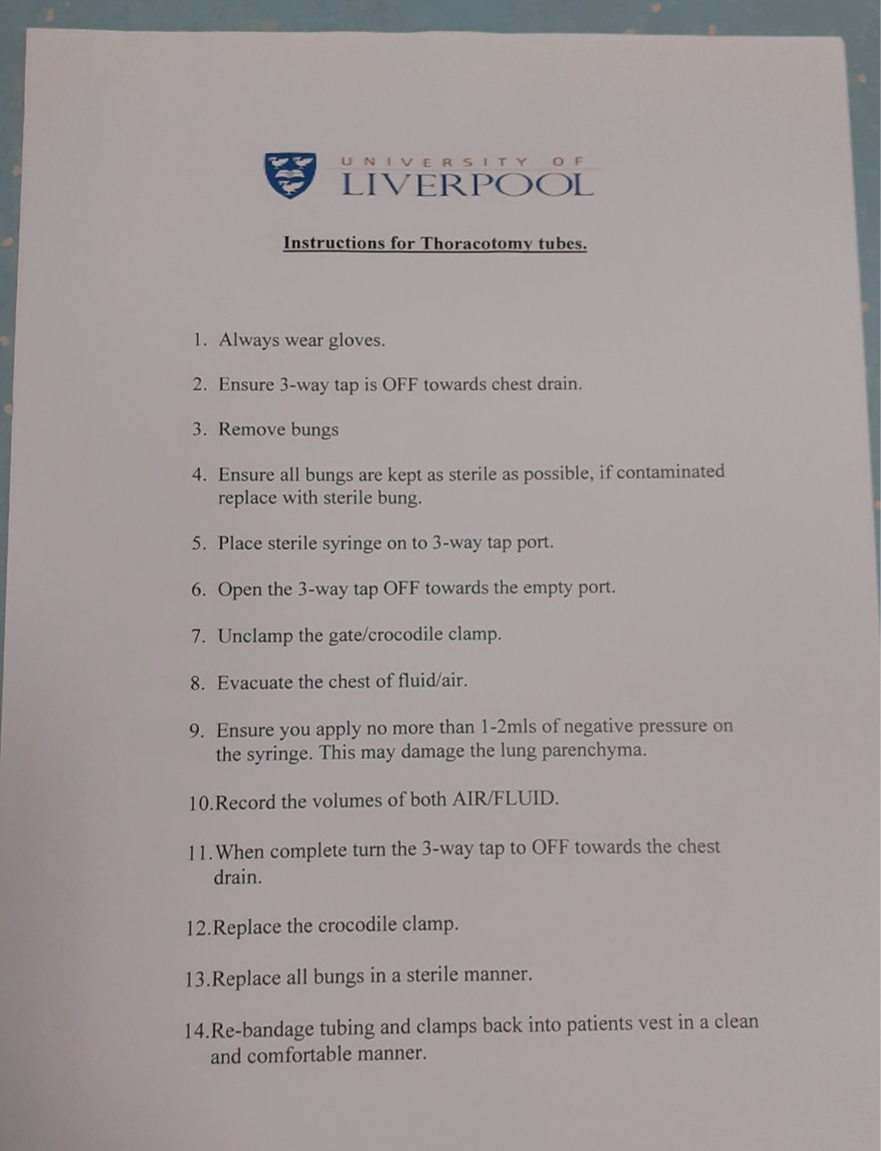
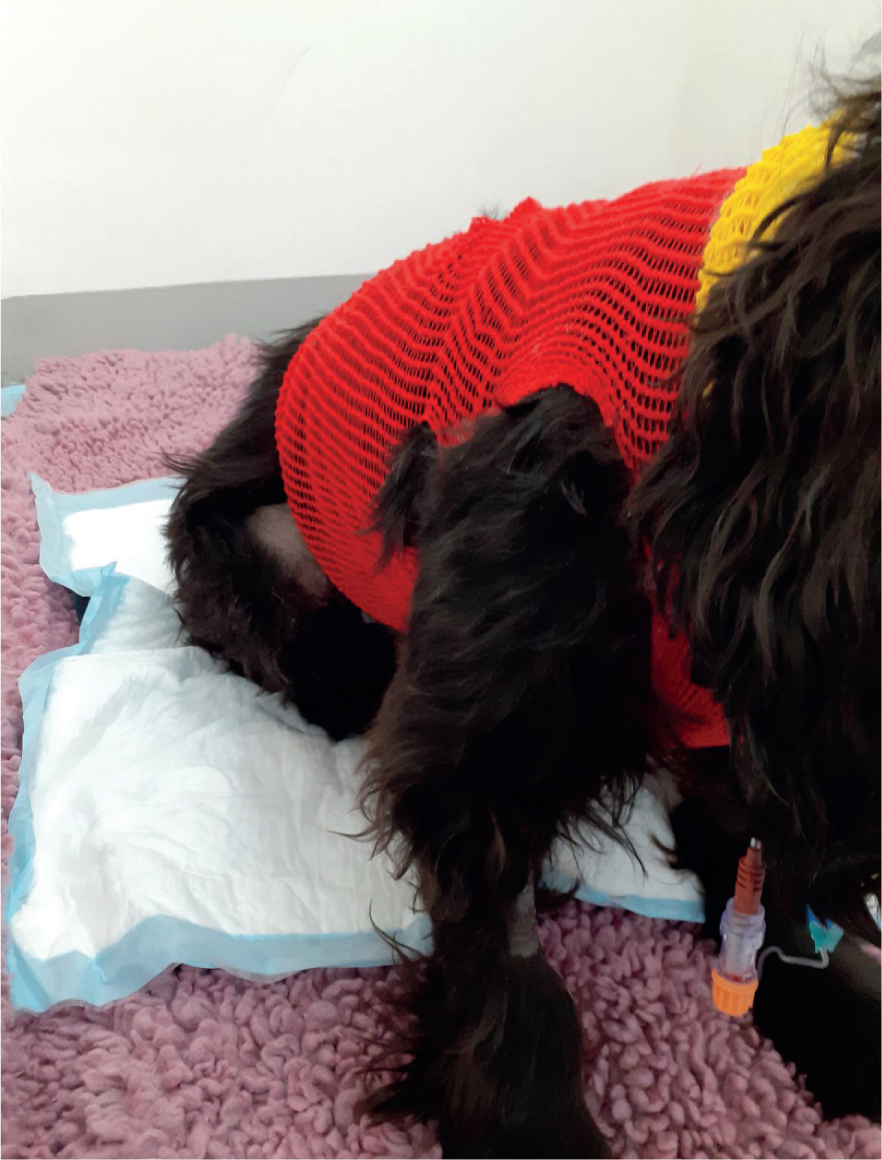
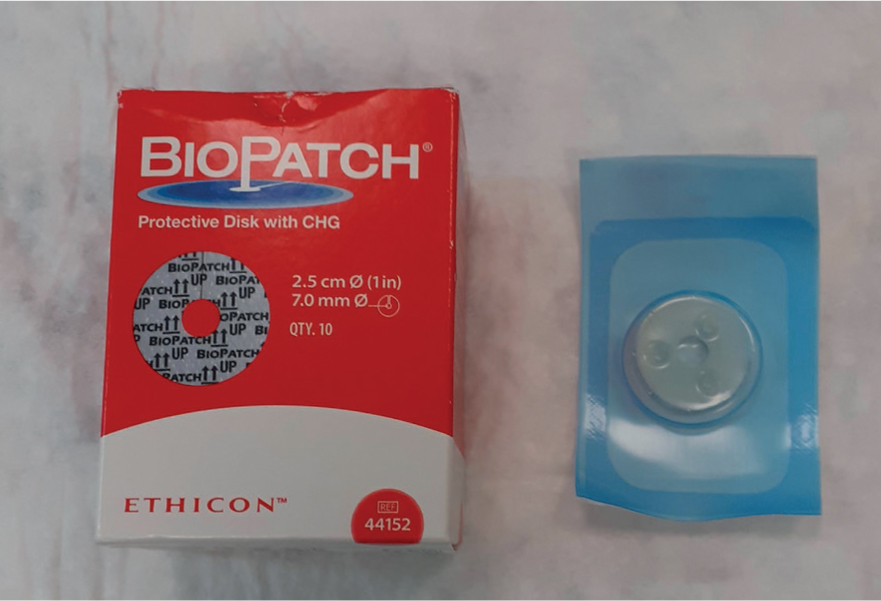
Pain scoring can be very helpful to quantify the efficacy of the pain-relieving methods chosen. There are various methods employed to achieve good analgesia in the postoperative period including using local anaesthetics down the chest drain or via wound soak catheters placed by the surgeon at the end of surgery, as well as systemic analgesia (Sigrist, 2015).
Conclusion
In conclusion, there are many ways to pre-empt and plan for the thoracic surgery patient to ensure the best outcome possible for the surgical procedure and the patient's experience, from the preoperative period through to the postoperative period. You can never be too prepared!
KEY POINTS
- Pre-operative planning is paramount to ensuring that you have considered all relevant points of the patients' history and potential problems you may encounter through the procedure and recovery.
- Multi-modal analgesia should be aimed for within any surgical procedure plan.
- Anaesthetic monitoring and record keeping are essential to stay abreast of patient status changes in the perioperative period.
- Mechanical ventilation is often required throughout thoracic surgery.
- Blood gas measurements are the best way of monitoring thoracic surgery patients' ventilation status.
- Good thoracostomy tube management in the postoperative period is essential for the comfort and speedy recovery of the patient.


